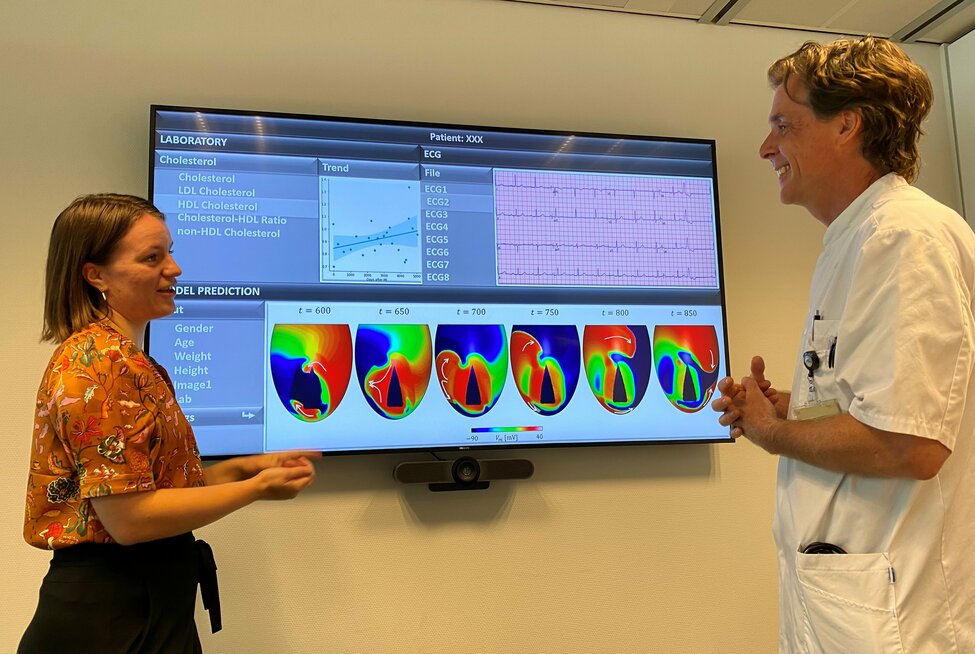Publications
Spread the news!
Digital twins will help to tailor healthcare more in the future
Researchers Lukas Dekker and Carlijn Buck of TU/e and Catharina Hospital are investigating how they can provide better-tailored care to heart patients through smart modeling, thanks to a digital twin of each patient.
Imagine you have a virtual copy of your own body. This digital twin, an accurate computer model, can help doctors better understand your health, personalize treatments, and intervene earlier to prevent more significant problems. What sounds like science fiction now is becoming more and more of a reality, and in the (distant) future, it could revolutionize healthcare.
Source: Catharina Ziekenhuis Eindhoven/Geert Piek
Paper Preprint: A probabilistic reduced-order modeling framework for patient-specific cardio-mechanical analysis
Moving towards a fast-to-evaluate model for clinical integration
While the developed IGA framework shows substantial improvements over models available in the literature, in terms of computational efficiency, it still exhibits substantial computational load. As a result, the computational effort hinders their application in the clinic, despite the fact that they may provide valuable information. In this work, we present a probabilistic reduced-order modeling (ROM) framework to dramatically reduce the computational effort of such models while providing a credibility interval. In the online stage, a fast-to-evaluate generalized one-fiber model is considered. This generalized one-fiber model incorporates correction factors to emulate patient-specific attributes, such as local geometry variations. In the offline stage, Bayesian inference is used to calibrate these correction factors on training data generated using a full-order isogeometric cardiac model (FOM). A Gaussian process is used in the online stage to predict the correction factors for geometries that are not in the training data. The proposed framework is demonstrated using two examples. The first example considers idealized left-ventricle geometries, for which the behavior of the ROM framework can be studied in detail. In the second example, the ROM framework is applied to scan-based geometries, based on which the application of the ROM framework in the clinical setting is discussed. The results for the two examples convey that the ROM framework can provide accurate online predictions, provided that adequate FOM training data is available. The uncertainty bands provided by the ROM framework give insight into the trustworthiness of its results. Large uncertainty bands can be considered as an indicator for the further population of the training data set.

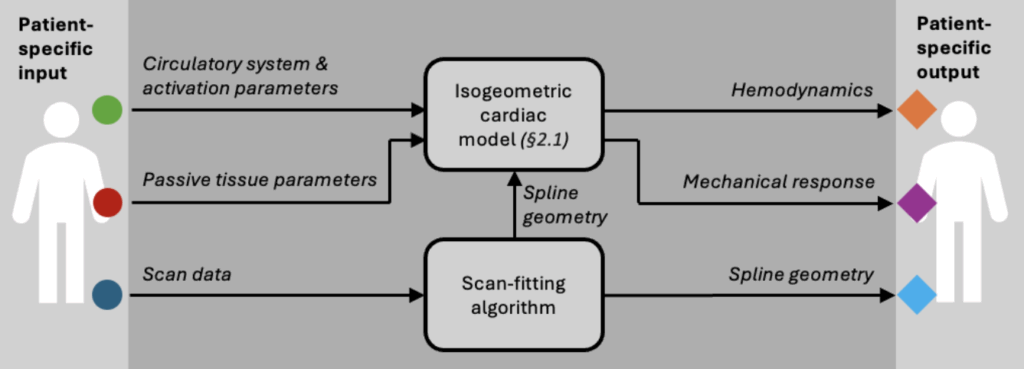
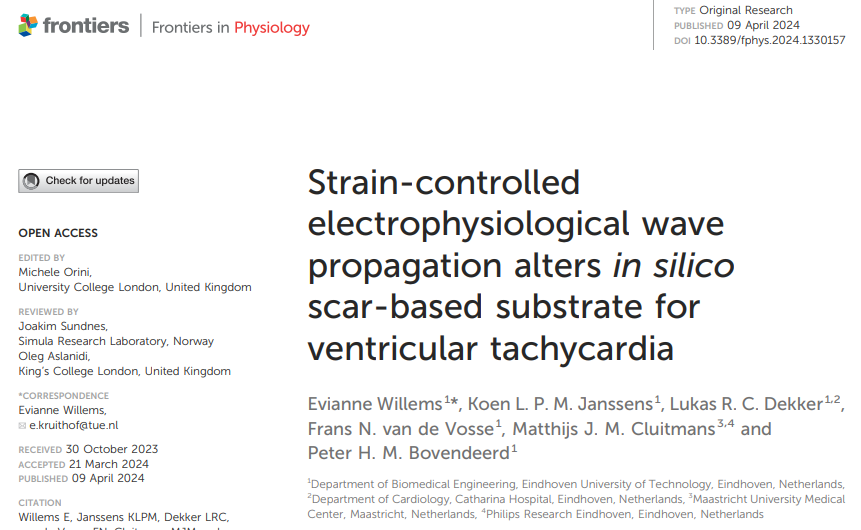
Published Paper: Strain-controlled electrophysiological wave propagation alters in silico scar-based substrate for ventricular tachycardia
In Frontiers of Physiology, we published our hypothesis that strain affects the propagation velocity of the cardiac depolarization wave. When implementing the hypothesis, a more heterogeneous field of conduction velocities appears around an infarct area, affecting the inducibility of ventricular tachycardia.
Published Paper: Echocardiogram-based ventricular isogeometric cardiac analysis using multi-patch fitted NURBS
Moving towards Patient-specific analysis.
The previously proposed IGA framework is extended by including patient-specific geometry data. Monitoring the cardiac function often relies on non-invasive vital measurements, electrocardiograms, and echocardiograms, which are typically low-resolution. Often, medical images are not suitable for high-fidelity modeling due to their spatial sparsity and low resolution. In this work, we present a workflow that converts a limited number of two-dimensional (2D) echocardiogram images into analysis-suitable left-ventricle geometries for isogeometric analysis (IGA). The image data is fitted by reshaping a multi-patch NURBS template. This fitting procedure results in a smooth interpolation with a limited number of degrees of freedom.
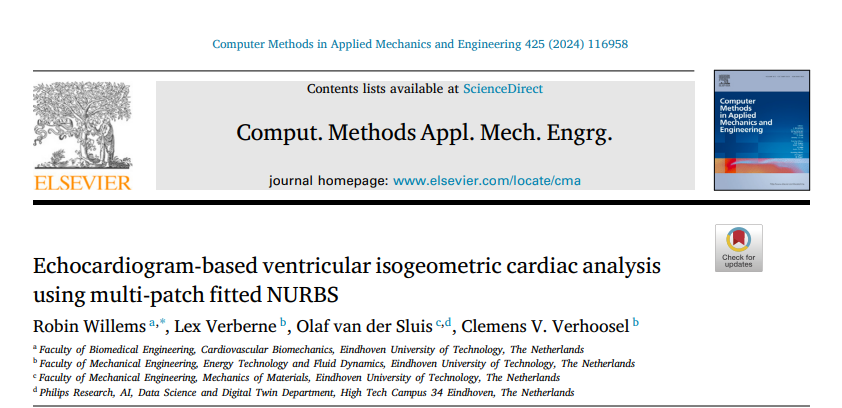
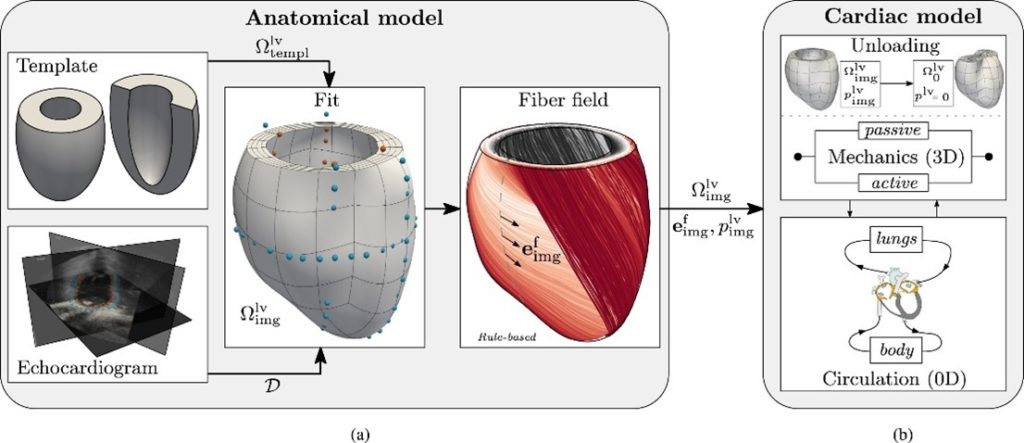
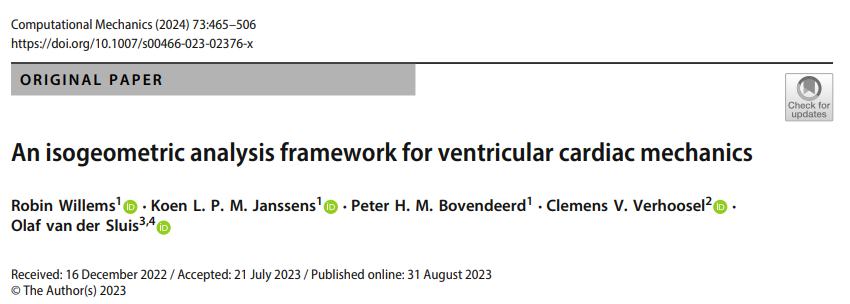

Published Paper: An isogeometric analysis framework for ventricular cardiac mechanics
As part of the COMBAT-VT project, we aim to develop a robust computer model that accurately captures the physics of the heart. The finite element method (FEM) is commonly used for these computational cardiac simulations. FEM requires a mesh to represent the geometry and, subsequently, to approximate the solution. To accurately capture curved geometrical features many (linear) elements may be required, possibly leading to unnecessarily large computation costs. Without loss of accuracy, a reduction in computation cost can be achieved by integrating geometry representation and solution approximation into a single framework using the isogeometric analysis (IGA) paradigm. In this publication, we propose an IGA framework suitable for echocardiogram data of cardiac mechanics, where we show the advantageous properties of smooth splines through the development of a multi-patch anatomical model. The developed IGA framework can be used as a first step toward an efficient workflow for an improved understanding of, and clinical decision support for, the treatment of cardiac diseases like heart rhythm disorders.
Two Published Conference Papers
Our group has published two conference papers!
The first paper elaborates on efficient use of isogeometric analysis (IGA) to model post-infarction left ventricular mechanics. The IGA method is compared to the traditional finite element analysis (FEA). Secondly, both the FEA- and IGA-model are used as input for an FEA-mechanics-driven electrophysiology model which is used for a ventricular tachycardia (VT)-inducibility study.
The second paper assesses the sensitivity of repolarization gradients to infarct borderzone properties. Post-infarct VT is often caused by a re-entrant circuit located in the infarct border zone (BZ). The main changes in the BZ are in action potential duration (APD) and conduction velocity (CD), which introduce high repolarization time gradients (RTGs) and can lead to re-entry. In this study a sensitivity analysis is conducted in which the changes in APD and CV in a BZ, using the detailed biophysical Ten Tusscher model and the phenomenological modified Mitchel-Schaeffer ionic model.
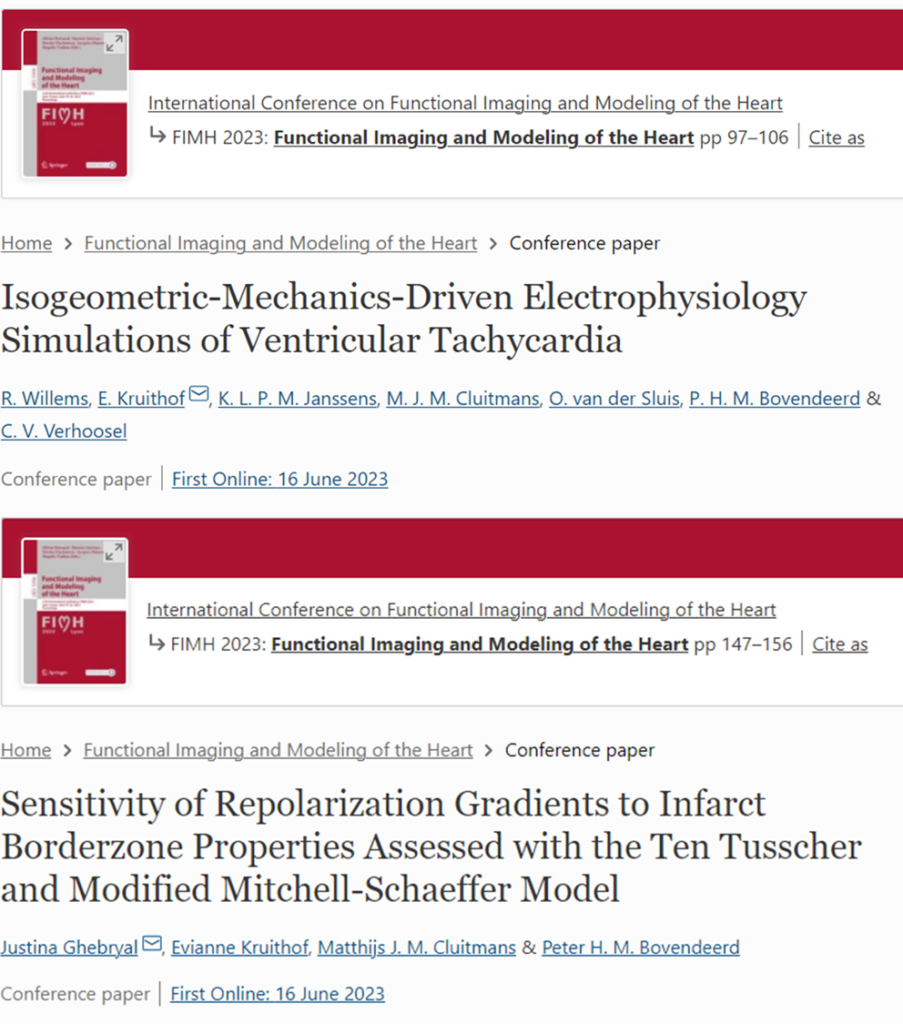
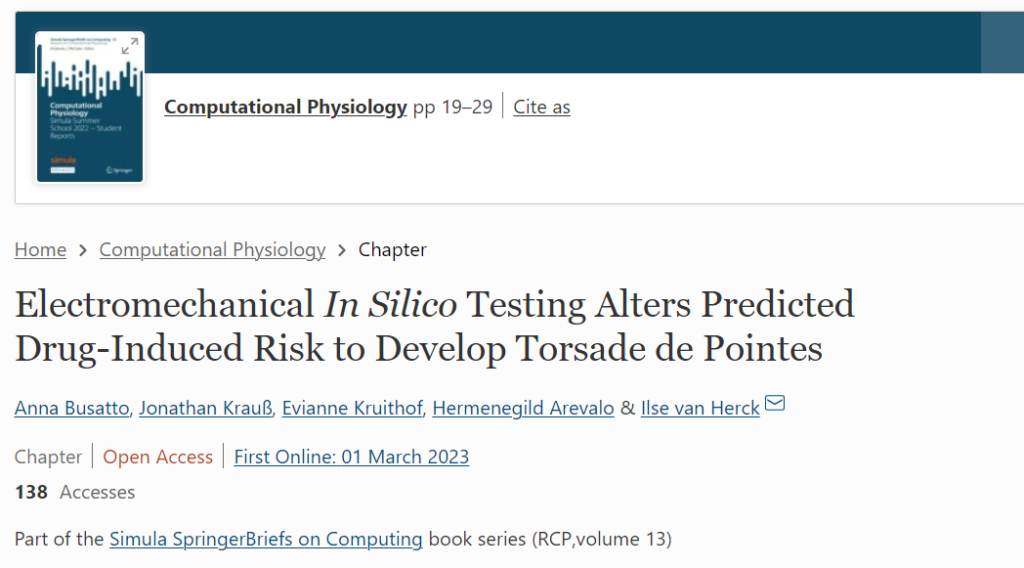
Published Chapter
Together with four other researchers, Evianne Kruithof published a chapter on electromechanical in silico testing of drug-induced risk to develop Torsade de Pointes. Torsade de Pointes (TdP) is a type of ventricular tachycardia that can occur as a side effect of several medications. A novel testing paradigm was used that utilizes single cell electromechanical simulations to predict TdP risk for drugs that could potentially be used clinically.
Conference e/MTIC
The e/MTIC conference: Fast track to clinical innovation – the essentials, was one where we were able to present our work to a broad public interested in MedTech. Furthermore, Carlijn got the opportunity to pitch COMBAT-VT and her PhD and ended second!
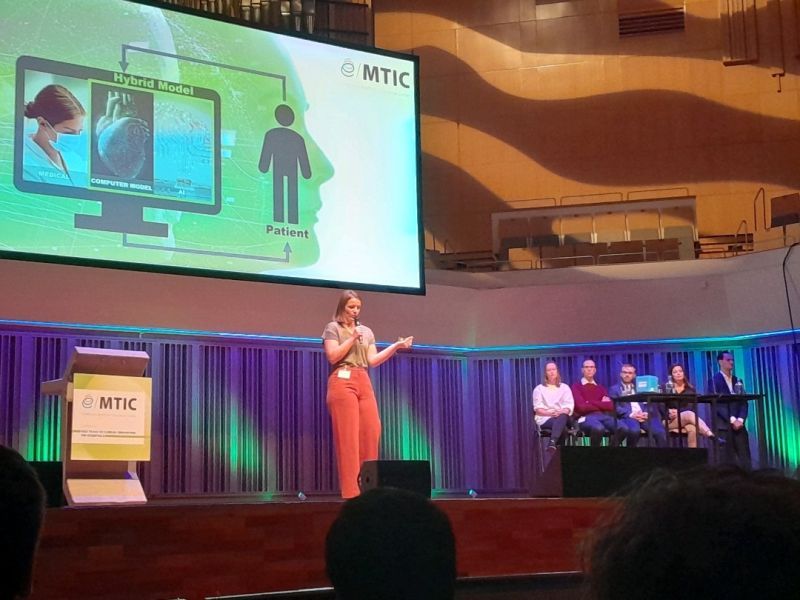
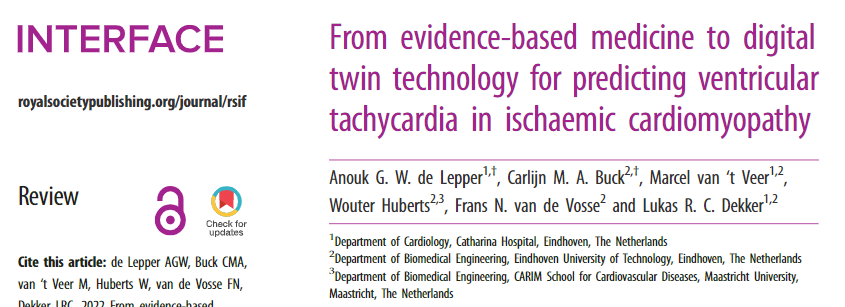
Published Review
Our first paper is published in the Journal of Royal Society Interface! It is a review about the medical, engineering and data science approach to tackle the prediction of Ventricular Tachycardia. The review gives an outlook on how we can combine all three approaches in a Digital Twin concept!
Cardio Poster & Pitch event e/MTIC
In the end of March we had the opportunity to share our research with our e/MTIC network during the Cardio Poster & Pitch event at the Philips Design Center. Robin gave an informational pitch about IGA modeling and he, Evianne and Carlijn presented their research posters, which can be found here:
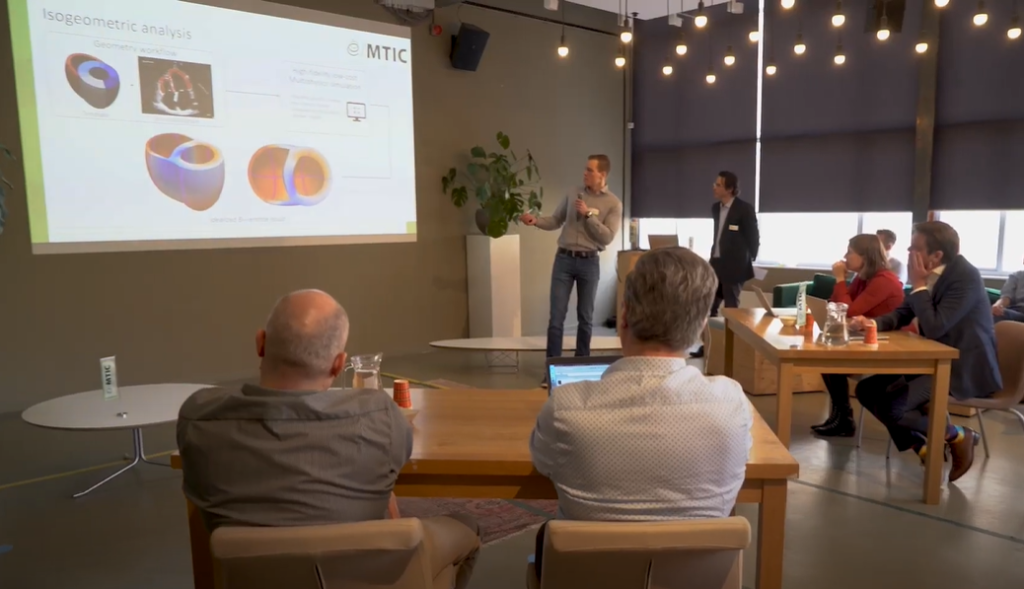

Can data predict who develops arrhythmias after having a myocardial infarction?
Which heart patients develop arrhythmias in the years after their infarction? Researchers at the Catharina Hart- en Vaatcentrum (cardiovascular center) and TU Eindhoven are trying to find an answer to this question with the help of artificial intelligence (AI). There is still a lot of uncertainty about arrhythmias after having a myocardial infarction, which can be life-threatening.
